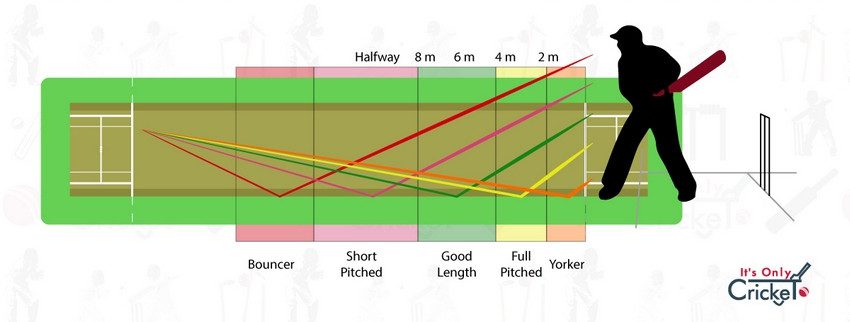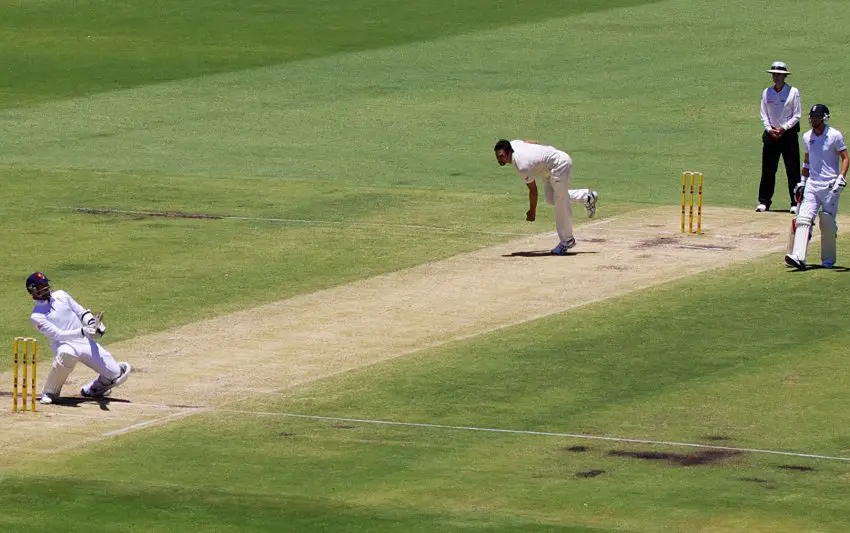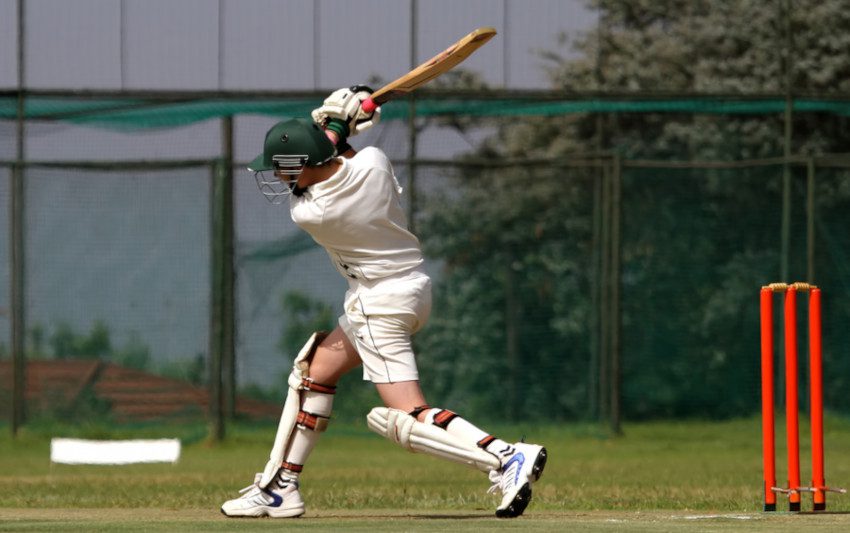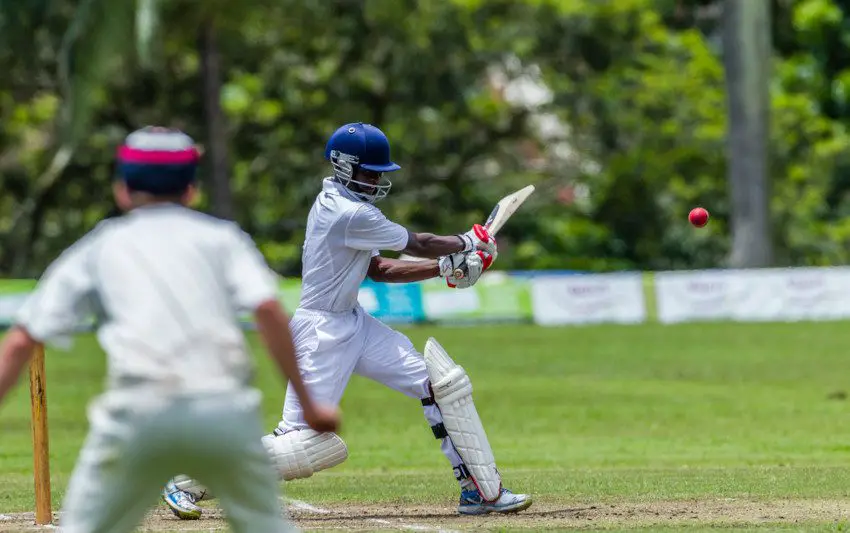Table of Contents
It’s one of the best weapons in a fast bowler’s armoury and it can dismiss or unsettle a batsman but just how do you bowl a bouncer?
What is a Bouncer in Cricket?
A bouncer is a short pitched delivery in cricket which is sent down by a fast bowler. It will tend to hit the pitch half way down, bouncing once before reaching the batsman at, or above, shoulder height.
When delivered effectively, it can make the batsman play a false shot or it can make them concerned about future short pitched bowling and the possibility of injury.

Can I Bowl a Bouncer?
You need to be a faster bowler to send down a bouncer. If you are looking to bowl spin or slower medium pace, then this isn’t the delivery for you and you should use all the other skills that come with that style of bowling.
However, if you have some good pace, it’s definitely worth working on your bouncer as this can be a strong delivery. You will also need the wicket to be in your favour. A hard, dry fast surface is best for this type of bowling.
When you have that combination of pace and a wicket which suits quick bowling, a bouncer can certainly be employed.
When to Use a Bouncer
If you speak to different fast bowlers on this then they might give you different answers. Most, however, will tell you that a bouncer is best used as a surprise delivery.
If it’s overused, a batsman can more accurately predict when to expect the short ball and they will most likely play better shots to accommodate. When used less frequently, a bouncer can be a shock to the established batsman. The batter is less prepared and there is a greater chance of them playing a false shot as a result.
With experience, you’ll start to get a feel as to when to bowl a bouncer. For example, if you are looking to swing the ball away from the batsman and they are allowing it to harmlessly pass by to the keeper, it may be time for a change. A fast, well directed bouncer will certainly force the batter into playing a shot.
For lower order batsmen, fast bowlers may use bouncers on a more frequent basis. However, they must make sure to stay within the laws that relate to intimidatory bowling.
Top order players with a perceived weakness to the short ball may also receive more bouncers than others. There are differences of opinion but I agree with the majority who feel that a bouncer should be a surprise weapon.

How to Bowl a Bouncer in Cricket
If you’ve got that pace and the conditions are in your favour, it’s time to learn all about bowling this special delivery. Firstly, you need to start with the run up.
As a quicker bowler, you should have already worked out a run up that suits your style. The important thing to remember with bowling a bouncer is that we don’t want to change that run up. The batsman shouldn’t be made aware that a different type of delivery is coming down and a change in your run could alert them to that.
However, when you release the ball, you should be looking to implement a change. This is an effort ball that requires aggression and extra momentum going into that final release.
With that point in mind, the bowling arm should come over more quickly. You are, in effect, looking to smash the ball into the pitch and that’s where the extra effort comes in. The batsman may pick this up but, at that stage, they will have less time to react. To summarise, a standard delivery may ‘kiss’ the pitch but a bouncer should be ‘driven’ into it.
The next point relates to where the ball should pitch. To impart extra bounce, you need to bowl shorter than any other delivery that you send down.
The recommended target area is around half way down the pitch. In fact, it may even be slightly in the bowler’s half, but the exact point will depend on the pace of the bowler and the bounce in the wicket.
Direction is also important: We’re looking to target straight or outside off stump. If the bouncer is on leg stump, it’s much easier for the batter to move out of harm’s way.
Tips for Bowling a Bouncer
Practise is key to any type of delivery in cricket but it’s especially important with a bouncer. This is a tough ball to perfect and, if it goes wrong, it can be expensive for your team.
Here are some tips on bowling the perfect bouncer:
Target area
I mentioned that target area and this is something that you can easily practise in the nets. Get some cones or some boundary markers and use them to form a square or an oblong on the ideal bouncer length.
Run in and practise as much as you can, trying to land the ball inside that target area.
Build up your Programme
It’s important not to overdo things: The bouncer is an effort ball and it can take a lot out of the body if you’re not used to bowling it. If you start to feel tired then stop and come back to your practise another day.
It’s not wise to push your bowling arm, or the relevant muscles beyond their limits. At all times, think about guarding against and preventing injury.
Use the Angles
A bouncer should be extremely difficult for the batsman to play. From their perspective, the best approach is to duck out of the way.
A perfectly aimed bouncer is going to cause the batter some problems but many bowlers and coaches advise young players to vary their direction of attack. Try to bowl wide of the crease while attempting to keep that off stump line. It will be exceptionally difficult for a batter to play any type of shot with the ball angling in short, and at pace.
A wide angle also makes it more difficult for that batter to get out of the way. If the batsman is attempting to avoid a bouncer, the natural thing to do is to duck or move to the leg side. If they move to leg, a ball delivered from wide of the crease is far more likely to simply follow them.
As a final tip for bowling bouncers in a match situation, I would advise bowlers to think very carefully about their field. If the batsman does elect to play a shot against your bouncer, they should be less able to keep it under control if the ball is delivered at the correct height.
Shots played to bouncers are more likely to go in the air, usually on the leg side. Changes to the laws in the wake of the 1932/33 Bodyline series mean that you can no longer have more than two fielders behind square on the leg side. However, you can still set an effective leg side trap with fielders on the boundary behind, and in front of square.


